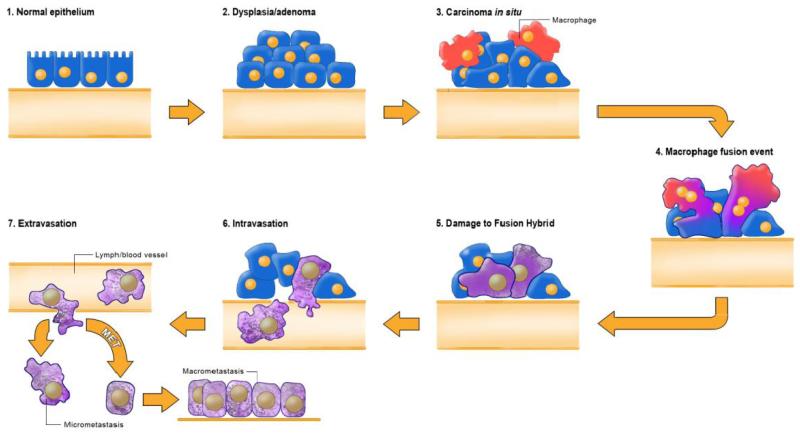FIGURE 5.
Fusion hybrid hypothesis of cancer cell metastasis. According to our hypothesis, metastatic cancer cells arise following direct transformation or following fusion hybridization between neoplastic epithelial cells and myeloid cells (macrophages). Macrophages are known to invade in situ carcinoma as if it were an unhealed wound. This creates a protracted inflammatory microenvironment leading to fusion hybridization between the neoplastic epithelial cell and the macrophage. Fusion hybridization can explain the phenomenon of EMT without invoking new mutations. Inflammation damages mitochondria leading to enhanced fermentation and acidification of the microenvironment. Mitochondrial damage leading to respiratory insufficiency becomes the driver for the neoplastic transformation of the epithelial cell and of the fusion hybrids (Figure 4). As macrophages are already mesenchymal cells that naturally possess the capability to enter (intravasate) and exit (extravasate) the circulation, the neoplastic fusion hybrid will behave as a rogue macrophage. The fusogenic properties of macrophage cells can also explain how metastatic cells can recapitulate the epithelial characteristics of the primary tumor at secondary micro-metastatic growth sites. This process can explain the phenomenon of MET without invoking a mutation suppression mechanism. Reprinted with permission from Seyfried and Ling.14

